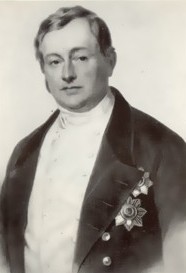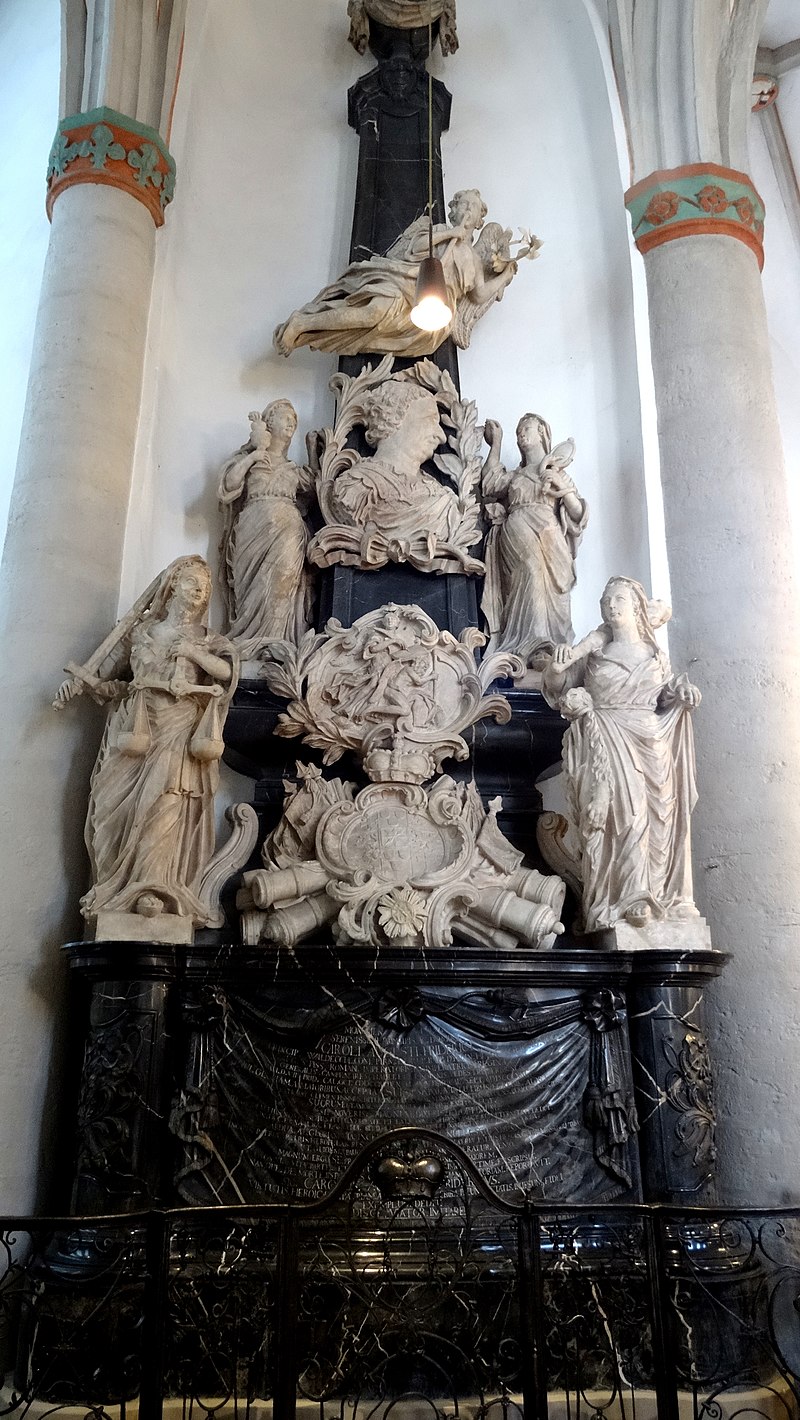by Susan Flantzer © Unofficial Royalty 2021

Georg II, Prince of Waldeck and Pyrmont; Credit – Wikipedia
The County of Waldeck was a county within the Holy Roman Empire since 1180. In 1625, the much smaller County of Pyrmont became part of the much larger County of Waldeck through inheritance and the combined territory was known as the County of Waldeck-Pyrmont. In 1712, Friedrich Anton Ulrich, Count of Waldeck-Pyrmont was elevated to Prince of Waldeck-Pyrmont by Holy Emperor Karl VI.
Friedrich, the last Prince of Waldeck-Pyrmont, abdicated on November 13, 1918, and negotiated an agreement with the government that gave him and his descendants the ownership of the family home Arolsen Castle and Arolsen Forest. Today the territory that encompassed the Principality of Waldeck-Pyrmont is located in the German states of Hesse and Lower Saxony
*******************
Georg II, Prince of Waldeck-Pyrmont was born on September 20, 1789, in Weil am Rhein, Margraviate of Baden, now in the German state of Baden-Württemberg. He was the second but the eldest surviving of the eight sons and the third of the thirteen children of Georg I, Prince of Waldeck-Pyrmont and Augusta of Schwarzburg-Sondershausen.
Georg had twelve siblings but seven of them died either in childhood or in their early twenties:
- Christiane of Waldeck-Pyrmont (1787 – 1806), Abbess of Schaaken, died at age 19
- Karl of Waldeck-Pyrmont (1788 – 1795), died in childhood
- Friedrich of Waldeck-Pyrmont (1790 – 1828), morganatically married Ursula Polle who was created Countess of Waldeck, had four children
- Christian of Waldeck-Pyrmont (1792 – 1795), died in early childhood
- Augusta of Waldeck-Pyrmont (1793 – 1794), died in infancy
- Johann of Waldeck- Pyrmont (1794 – 1814), died at age 20
- Ida of Waldeck-Pyrmont (1796 – 1869), married Georg Wilhelm Prince of Schaumburg-Lippe, had nine children
- Wolrad of Waldeck-Pyrmont (1798 – 1821), died at age 23
- Mathilde of Waldeck-Pyrmont (1801 – 1825), married Eugen of Württemberg, had three children, died during her fourth pregnancy
- Karl Christian of Waldeck-Pyrmont (1803 – 1846), married Amalie of Lippe-Biesterfeld, had one child
- Karoline Christiane of Waldeck-Pyrmont (1804 – 1806), died in early childhood
- Hermann of Waldeck-Pyrmont (1809 – 1876), married Agnes Teleki de Szék, had no children
In 1807, Georg’s father joined the Confederation of the Rhine, a group of German client states of Napoleon’s First French Empire. Because of Waldeck-Pyrmont’s close relationship with the First French Empire, Georg spent two years in training at Napoleon’s court in Paris and Versailles. He then studied law at the University of Leipzig.
On September 24, 1812, after the death of his unmarried and childless elder brother Friedrich Karl August, Prince of Waldeck-Pyrmont, Georg’s father succeeded him as Georg I, Prince of Waldeck-Pyrmont. However, Georg I’s reign lasted a little less than one year, and upon his death on September 9, 1813, his twenty-three-year-old son succeeded as Georg II, Prince of Waldeck-Pyrmont.

Emma of Anhalt-Bernburg-Schaumburg-Hoym; Credit – Wikipedia
On June 26, 1823, at Schaumburg Castle in Schaumburg, Principality of Anhalt-Bernburg-Schaumburg-Hoym, now in the German state of Lower Saxony, Georg married Emma of Anhalt-Bernburg-Schaumburg-Hoym, daughter of Viktor II, Prince of Anhalt-Bernburg-Schaumburg-Hoym and Amalie of Nassau-Weilburg.
Georg and Emma had five children. Through their son Georg Viktor, they are ancestors of the Dutch royal family.
- Augusta of Waldeck-Pyrmont (1824 – 1893), married Alfred, Prince of Stolberg-Stolberg, had seven children
- Josef of Waldeck-Pyrmont (1825 – 1829), died in childhood
- Hermine of Waldeck-Pyrmont (1827 – 1910), married Adolf I, Prince of Schaumburg-Lippe, had eight children
- Georg Viktor, Prince of Waldeck-Pyrmont (1831 – 1893), married (1) Helena of Nassau, had seven children including Emma who married King Willem III of the Netherlands and Helena who married Prince Leopold, Queen Victoria’s hemophiliac, youngest son (2) Louise of Schleswig-Holstein-Sonderburg-Glücksburg, had one son who was killed in World War I
- Wolrad of Waldeck-Pyrmont (1833 – 1867)
Since 1645, Waldeck and Pyrmont had been ruled jointly in a personal union. Georg attempted to unite Waldeck and Pyrmont under constitutional law. However, there was much political resistance, and this was not accomplished until 1849, four years after Georg’s death. In 1815, after the fall of Napoleon, Waldeck-Pyrmont joined the German Confederation, an association of 39 predominantly German-speaking sovereign states created by the Congress of Vienna as a replacement for the former Holy Roman Empire, which had been dissolved in 1806.

Princely Mausoleum and Cemetery; Credit – www.findagrave.com
On May 15, 1845, Georg II died at the age of 55, in Arolsen, Principality of Waldeck-Pyrmont, now in the German state of Hesse. He was buried in the Princely Mausoleum at Schloss Rhoden (link in German) in Rhoden, Principality of Waldeck-Pyrmont, now in the German state of Hesse. His wife Emma, served as Regent for their fourteen-year-old son Georg Viktor, Prince of Waldeck-Pyrmont until 1852. She survived her husband by thirteen years, dying on August 1, 1858, in Pyrmont, Principality of Waldeck-Pyrmont, now in the German state of Lower Saxony, aged 56, and was buried with her husband in the Princely Mausoleum at Schloss Rhoden.
This article is the intellectual property of Unofficial Royalty and is NOT TO BE COPIED, EDITED, OR POSTED IN ANY FORM ON ANOTHER WEBSITE under any circumstances. It is permissible to use a link that directs to Unofficial Royalty.
Waldeck-Pyrmont Resources at Unofficial Royalty
- Principality of Waldeck-Pyrmont Index
- Profiles: Princes and Consorts of Waldeck and Pyrmont
- Waldeck and Pyrmont Royal Burial Sites
Works Cited
- De.wikipedia.org. 2020. Georg II. (Waldeck-Pyrmont). [online] Available at: <https://de.wikipedia.org/wiki/Georg_II._(Waldeck-Pyrmont)> [Accessed 3 December 2020].
- En.wikipedia.org. 2020. George II, Prince Of Waldeck And Pyrmont. [online] Available at: <https://en.wikipedia.org/wiki/George_II,_Prince_of_Waldeck_and_Pyrmont> [Accessed 3 December 2020].
- Flantzer, Susan, 2020. Christiane Henriette of Zweibrücken-Birkenfeld, Princess of Waldeck-Pyrmont, Regent of Waldeck-Pyrmont. [online] Unofficial Royalty. Available at: <https://www.unofficialroyalty.com/christiane-henriette-of-zweibrucken-birkenfeld-princess-of-waldeck-pyrmont-regent-of-waldeck-pyrmont/> [Accessed 1 December 2020].
- Flantzer, Susan, 2020. Georg I, Prince of Waldeck-Pyrmont. [online] Unofficial Royalty. Available at: <https://www.unofficialroyalty.com/georg-i-prince-of-waldeck-and-pyrmont/> [Accessed 2 December 2020].
- Flantzer, Susan, 2020. Royal Burial Sites Of The Principality Of Waldeck-Pyrmont. [online] Unofficial Royalty. Available at: <https://www.unofficialroyalty.com/former-monarchies/german-royals/principality-of-waldeck-and-pyrmont/royal-burial-sites-of-the-principality-of-waldeck-pyrmont/> [Accessed 30 November 2020].
- Lagis-hessen.de. 2020. Waldeck And Pyrmont, Georg Friedrich Heinrich Fürst Von – Biografie : Erweiterte Suche : LAGIS Hessen. [online] Available at: <https://www.lagis-hessen.de/pnd/104311886> [Accessed 3 December 2020].
- Waldecker-muenzen.de. 2020. Georg II, Fürst Von Waldeck-Pyrmont. [online] Available at: <http://www.waldecker-muenzen.de/regent_detail.php?rnr=32&menu=1.2> [Accessed 3 December 2020].

























